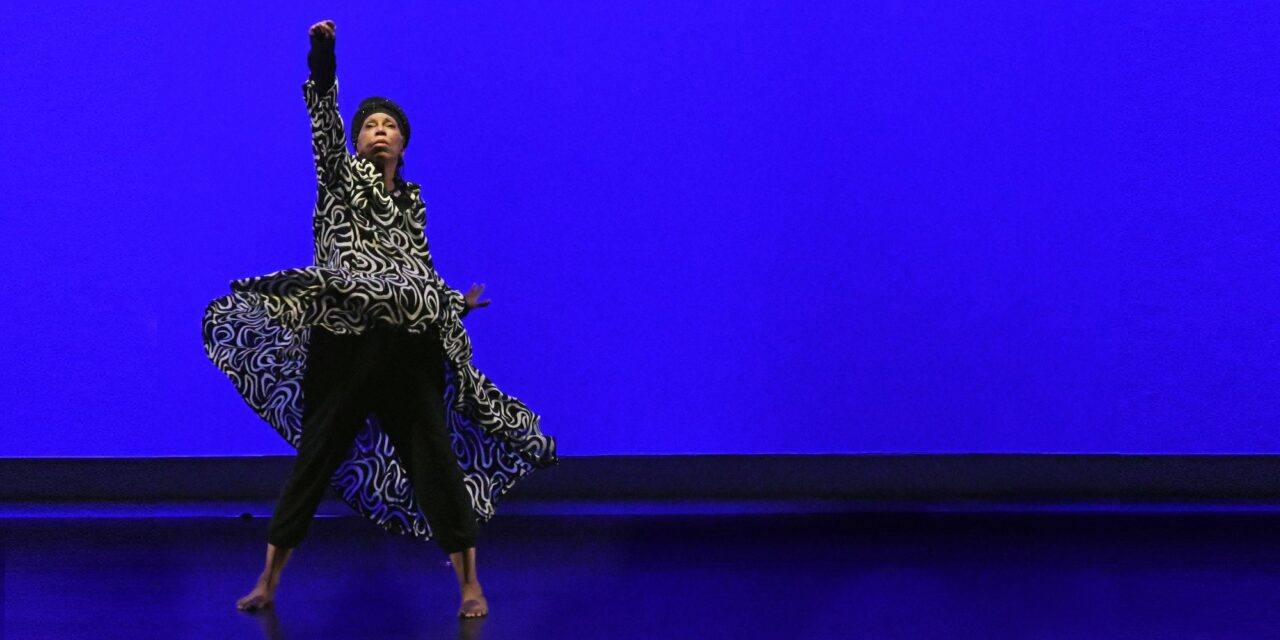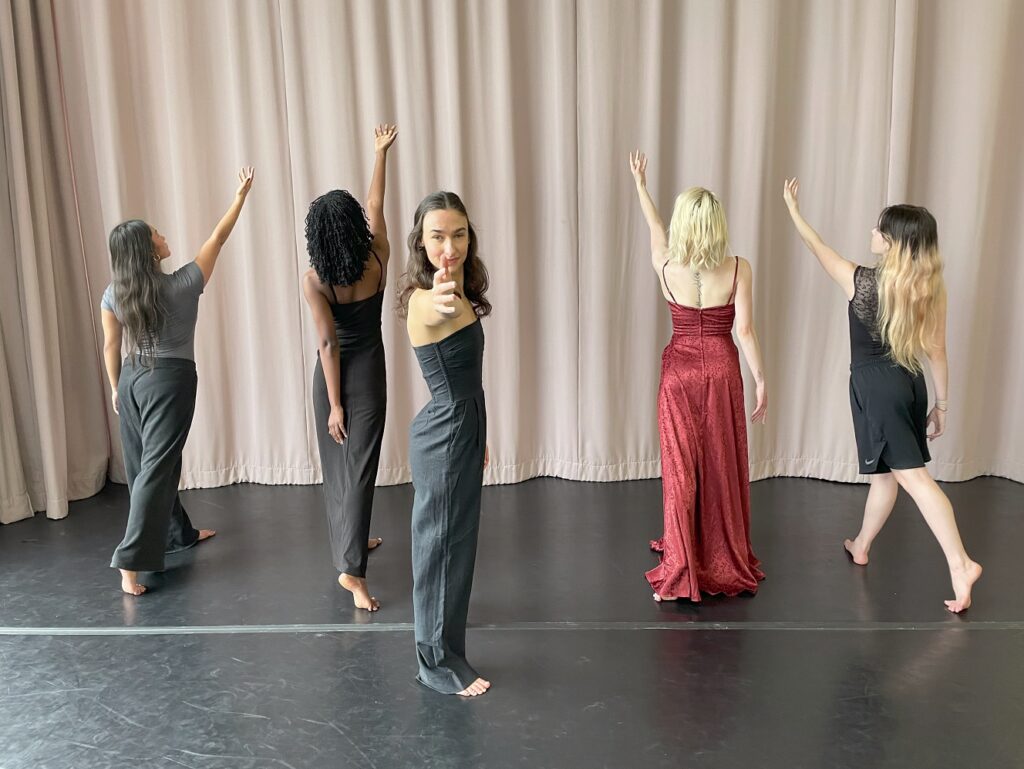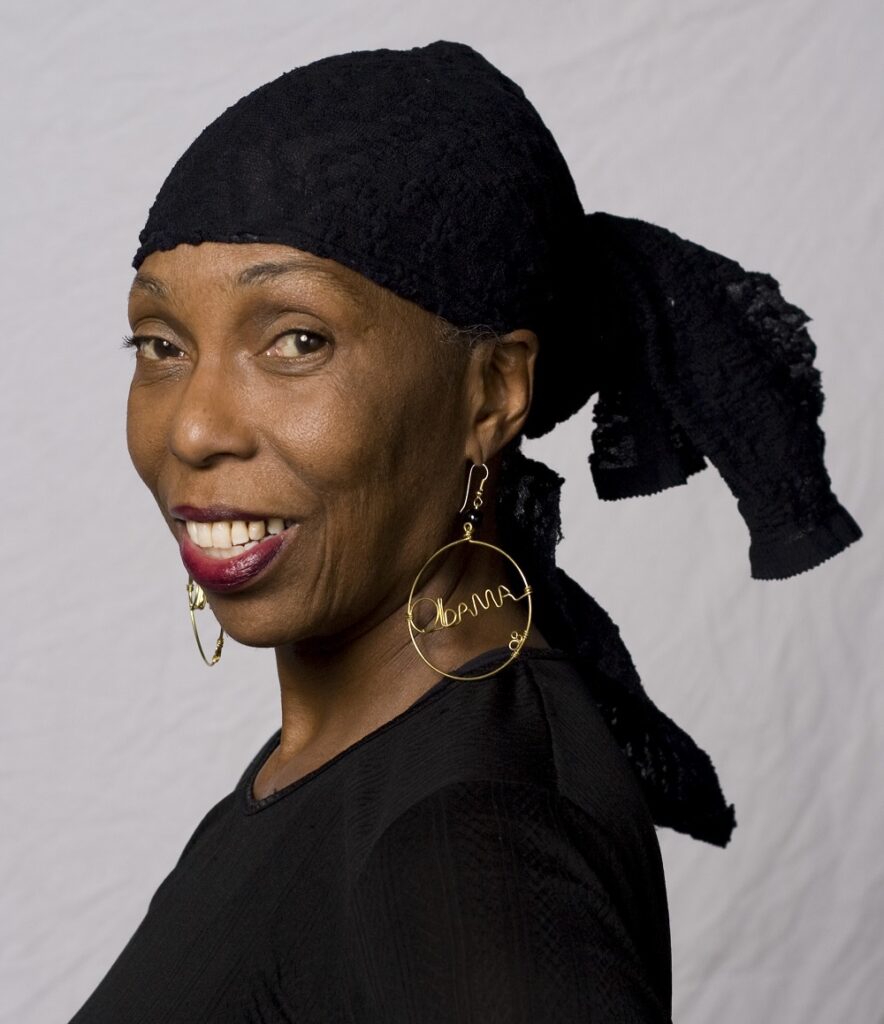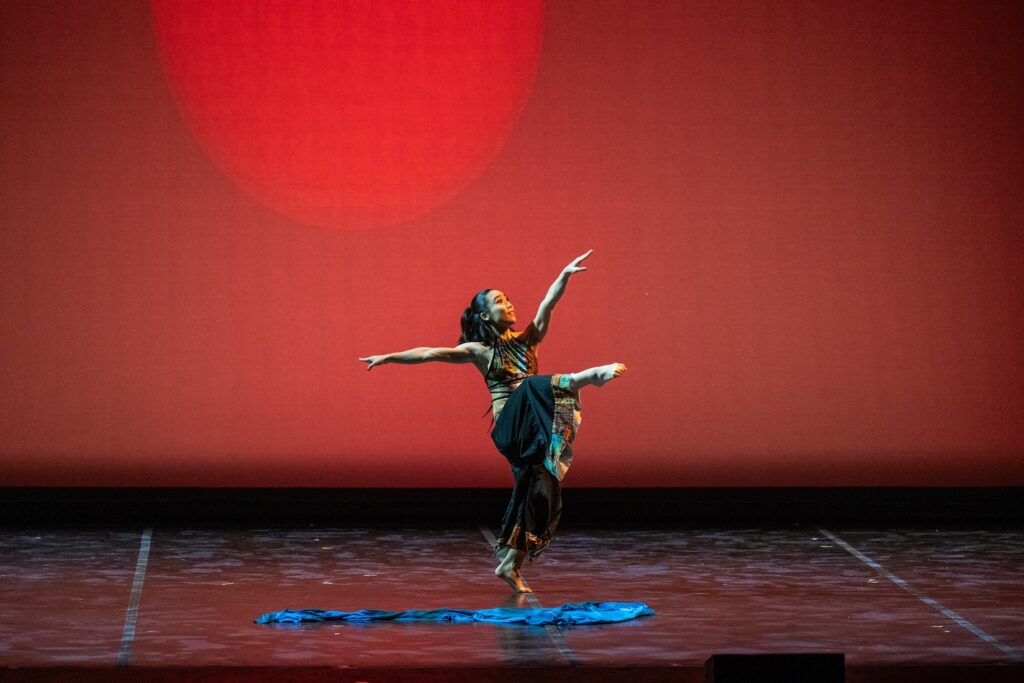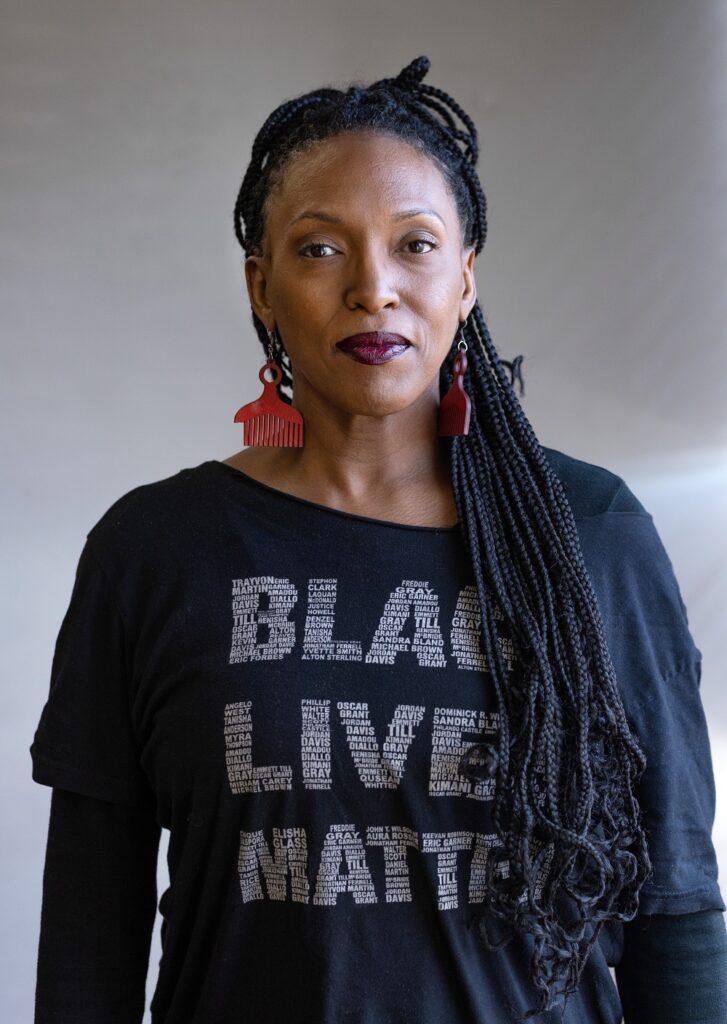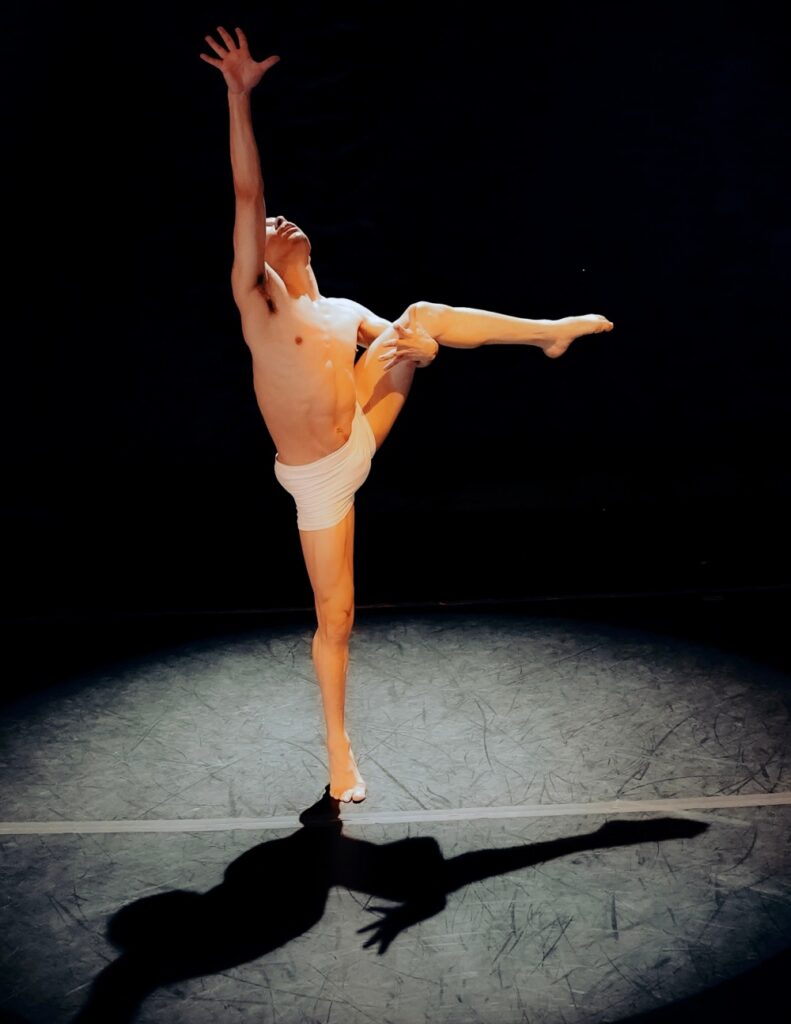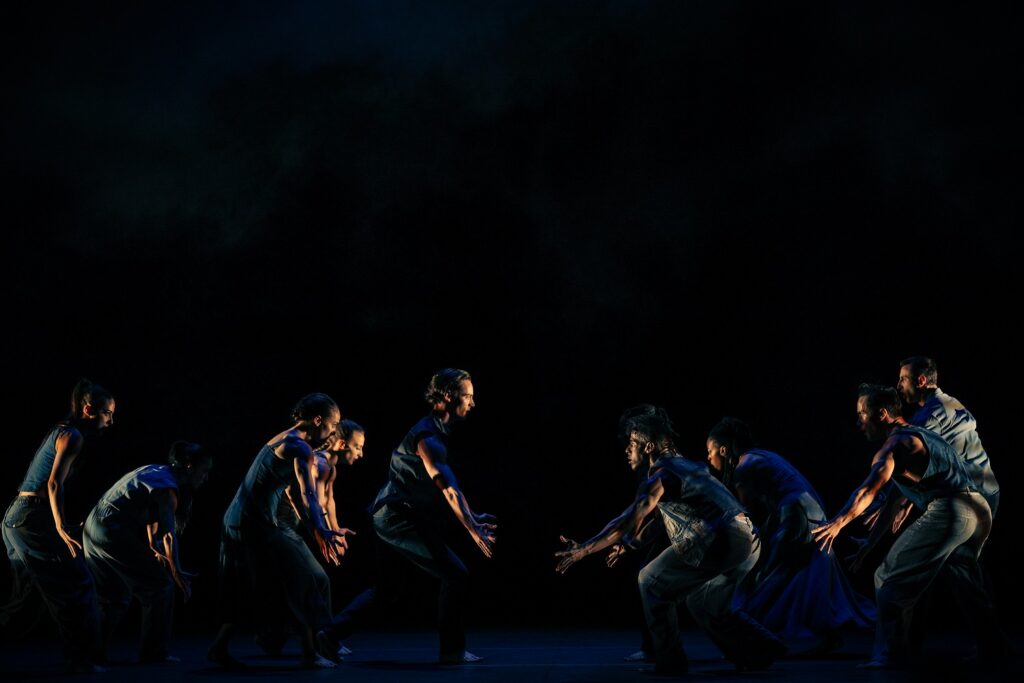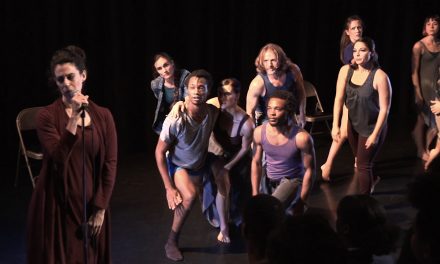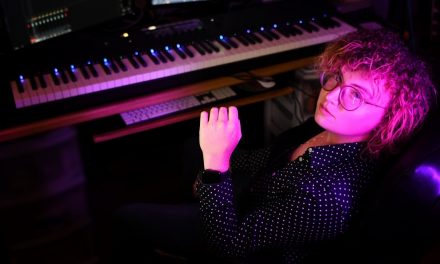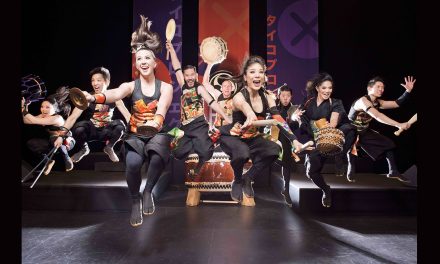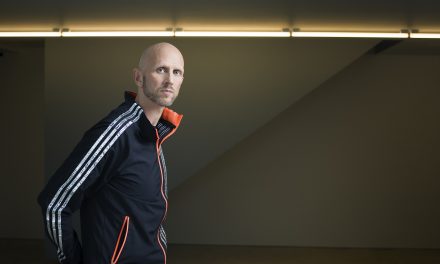April 6, 2025 marked the beginning the LA Seen Festival, a monthlong series of Los Angeles performing arts at the Younes and Soraya Nazarian Center for the Performing Arts, known to audiences as The Soraya. The series opened with GRAMMY-winning jazz trumpeter and composer Terrence Blanchard followed by The Colburn Orchestra with conductor Stéphane Denève on the podium (April 12), and The Soraya & ARTDONTSLEEP Present Adrian Younge Something About April with full orchestra (April 17). The series ends on April 26 with LA Dances Graham 100 that includes Los Angeles based dancers from the Lula Washington Dance Theatre, Glorya Kaufman School of Dance at USC, CSU Northridge, L.A. County High School for the Arts (LACHSA), and three soloists from the Martha Graham Dance Company (MGDC). Tickets are on sale now.The LA Dances Graham100 program will include two of Martha Graham’s earliest solos Satyric Festival Song and Deep Song, in addition to El Penitente, Lamentation Variations, Panorama (previously performed at The Soraya) and it will close with two pieces of Graham’s later works Conversation of Lovers, and Ritual to the Sun (Helios). The seven-piece program covers a singular arc of MGDC history from 1932 to two anticipated 2025 world premiere Lamentation Variations pieces. Tickets are on sale now.
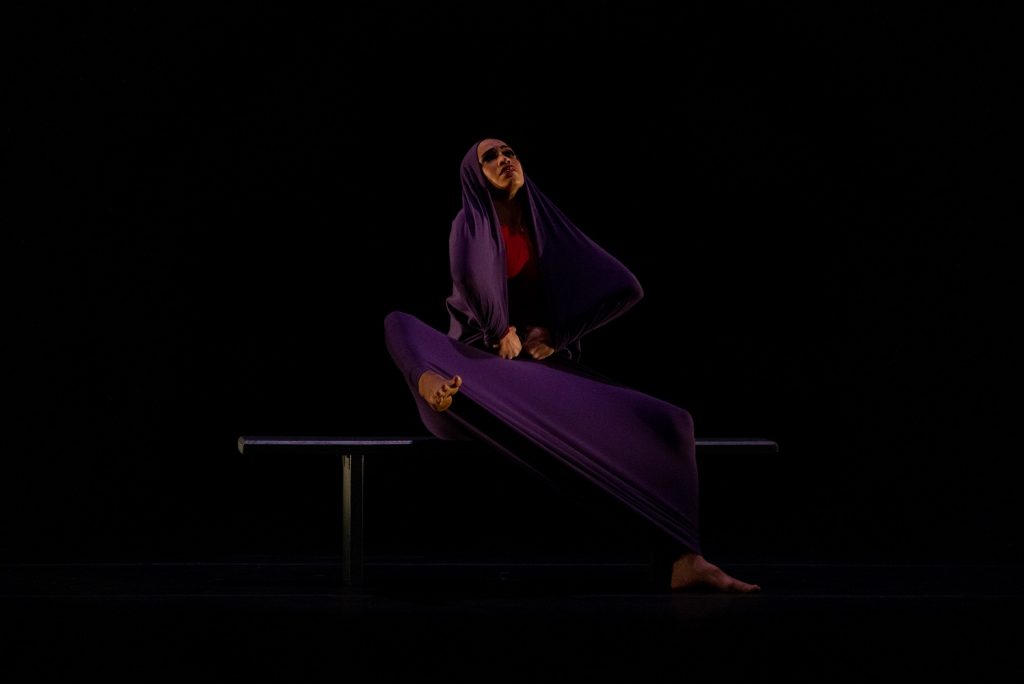
Martha Graham Dance Company – Natasha M. Diamond-Walker in Graham’s “Lamentation” – Photo by Luis Luque
When I think of Los Angels dance, one of the first names that comes to mind is Lula Washington who Co-founded her company with husband Erwin Washington in 1980. Many consider Lula Washington to be the grande dame of LA dance as Martha Graham was to dance in New York City. LA Dance Chronicle was honored to have the opportunity to have an interview with Lula Washington and her amazingly talented daughter Tamica Washington-Miller, now the company’s Associate Director and Choreographer.
Lula Washington is a force of nature with a great sense of humor and this interview flowed as easily as one can always hope. She was direct, funny, serious about her art form and very aware and respectful of her dance ancestors and passing her knowledge on to the younger generation of dancers.
Because this is a family run dance company, all with the same last name, I will be humbly using their first names. My first question for Lula was how she became involved with this project, LA Dances Graham100.
“This was part of the Graham100 project and from what I understand, they went to different parts of the United States and asked different groups to participate in it,” Lula said. “They provided you with a range of works by Martha Graham and you selected the works that best fit your company and what you can handle. That was my understanding of it and that is how I approached it.” By her statement “what you can handle” Lula was not speaking to whether or not the dancers could handle this project but the size of one’s company, the number of dancers, the company’s budget, and timelines and logistics.
“We feel honored to have been invited and it has been a wonderful experience,” Tamica said. “Cheers to Thor Steingraber, Executive Director of The Soraya, for championing such a dynamic project. We are delighted that this coincides with the Lula Washington Dance Theatre’s 45th Anniversary Celebrations!”
Lula chose two solos from that list of Graham’s repertory, Satyric Festival Song (1932) set to a score by Imre Weisshaus, and Deep Song (1927) a response to the Spanish Civil War with music by Henry Cowell. Satyric Festival Song will be performed by company member Kozue Kasahara and Ongelle Johnson will perform Deep Song.
Also on the list were group works that Lula thought took far more involvement than she could handle. “I felt, looking at the range of works, that those two fit my organization best. I don’t know if people understand that Lula and Erwin have had a long-time relationship with Mr. Donald McKayle, and Mr. Donald McKayle would always talk to us about Martha Graham’s choreography and possibly one day doing some of her work.” The current Artistic Director of MGDC is former company member Janet Eilber who prior to that danced with Donald McKayle’s company. McKayle would often talk about his solo Saturday’s Child (1948) that Ms. Eilber performed and how eventually one day, the Lula Washington Dance Theatre would also be able to perform it.
“So, this is a circle come true because as I did more research I saw that there was a similarity in our philosophical approach,” She said. “She (Graham) was very concerned and moved by social issues and injustices going on around the world in her lifetime.” She said that without doing that research, she may not have known about their similarities. “I feel very honored now that we are doing these two solos. When I saw these works I thought ‘oh, this is perfect for Ongelle and this is perfect for Kozue.” For Lula, it is a full circle from Graham to her company.
Tamica added a couple more connecting points. “Martha Graham and her husband worked together in their company to make it happen and all the things that come along with that,” She said. “Lula and Erwin have always been working together in that sense and making it happen and accessible form and making the business work. As well, Lula talked about her approach to the work and the social justice aspect, Martha Graham was very particular and pure in her approach her own choreography, Lula is that as well.”
Tamica also explained how her mother rarely speaks about her choreographic process. In that process, Lula has a point of view but does not discuss it until the work reveals itself to her. Like most artists, Lula hopes that her work will resonate and review itself to audiences. Graham spent a long time in the studio working on a new work until it revealed itself. In the very early years Graham was unable to have an integrated company. This, of course, changed as the company became more popular. “For us to be invited to the 100th anniversary, and at this time that we live in, is beautiful and I think it is important that the dance world is able to share and showcase in this way,” she added.
Graham dancer, Blakely White-McGuire flew to LA to rehearse the two solos to the dancers and then in January of this year, they traveled to New York to rehearse with Eilber. “She actually rehearsed with the girls herself,” Lula said. “and she was very pleased with what she saw.” Eilber was able to give the women an in-depth understanding of the two solos, something that Ongelle and Kozue found very meaningful because neither of them had ever studied the Graham Technique. Lula pointed out that she believes that there is the classical Graham and the nonclassical Graham. “That’s movement that any well trained dancer that has the strength should be able to do,” she continued.
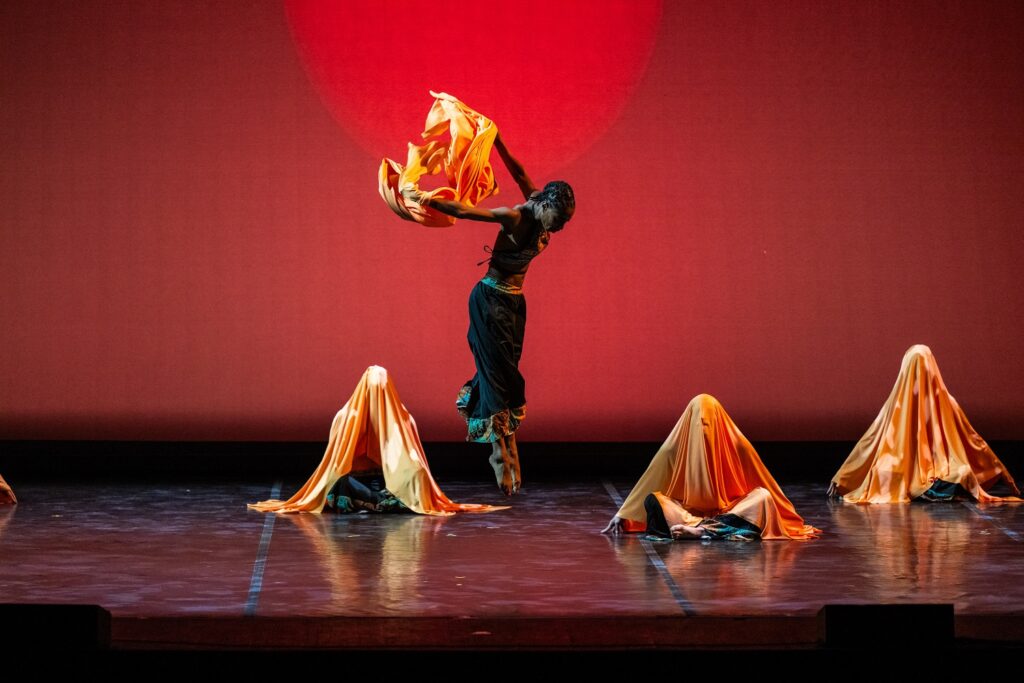
Ongelle Johnson (center) in Lula Washington’s The Master Plan, A attribute to Pharoah Sanders – Photo courtesy of LWDT.
Lula took Horton and Graham technique classes, but she was adamant the she did not study those styles which she stressed is a longer process. Over the years, she has hired teachers at her school who teach Horton technique but never any who teach Graham technique. It is something that the Washington organization is hoping one day to include at their school.
As part of this project participants were invited to create their own interpretation of Graham’s Lamentation. The only condition was that they followed a few rules. They were limited to no more than 4 minutes, they were not allowed to use a bench or fabric like what Graham used. They had to have a color scheme that was either black or navy blue and they could choose whatever music they wanted to make with their own personal statement. The dancers who will perform Lula’s Lamentation are Danny Guerrero (LWDT senior dancer and lead), Thomas Davis – (LWDT Associate Dancer), Khaleea Jones – (LWDT Apprentice), and Brooke Stration – (LWDT Apprentice).
Her interpretation of Lamentation is very different, Lula stated. She is paying tribute to Rudy Perez in the sense that she did not want other sounds in the work that would contribute to what people might think it is. But she is using acappella singing.
I asked both Lula and Tamica to explain the Lula Washington dance technique. “My own personal technique is a blending,” she began. “I and my husband, Erwin came from a theater background. He writes musical theater and plays and I used to always choreograph [them]. I started off dancing with R’Wanda Lewis African-American Dance Company that I have fused,” Lula said.
“We use codified ballet, modern and jazz, traditional techniques and a range of genre from the African Diaspora within the movement vocabulary of our choreography,” Tamica added. “More of a style and philosophy in practice/process rather than a ‘technique.’”
She has danced with some of the premier dance and jazz artists in Los Angeles. Lula and Tamica came up with a list of names that Lula worked with: Louis Johnson, Claude Thompson, Jaime Rogers, Lester Wilson, Michael Peters, Joe Termaine, Billy Pope, Chester Whitmore, William “Bill” Couser, and Hama. “I have touched them and they have touched me,” Lula said. “So, all of my work is a blending of different styles and techniques.” I mentioned that in my own work I incorporated the rhythms I learned from studying tap. “You mentioned tap. I incorporate tap, street dance, the spoken word, songs, and African movement. “I incorporate all those because to me, when you are looking to create work you find a connection to your roots.”
When she first started her company, Lula told me that a dancer who had just left the Merce Cunningham Dance Company joined her company. Her own connection to Cunningham was as a graduate student at UCLA Department of Dance, he set a work of his that used music by Aretha Franklin. Lula had been forbidden by her professors to use such music by Black artists, but Cunningham showed her that she could use any music that she chose.
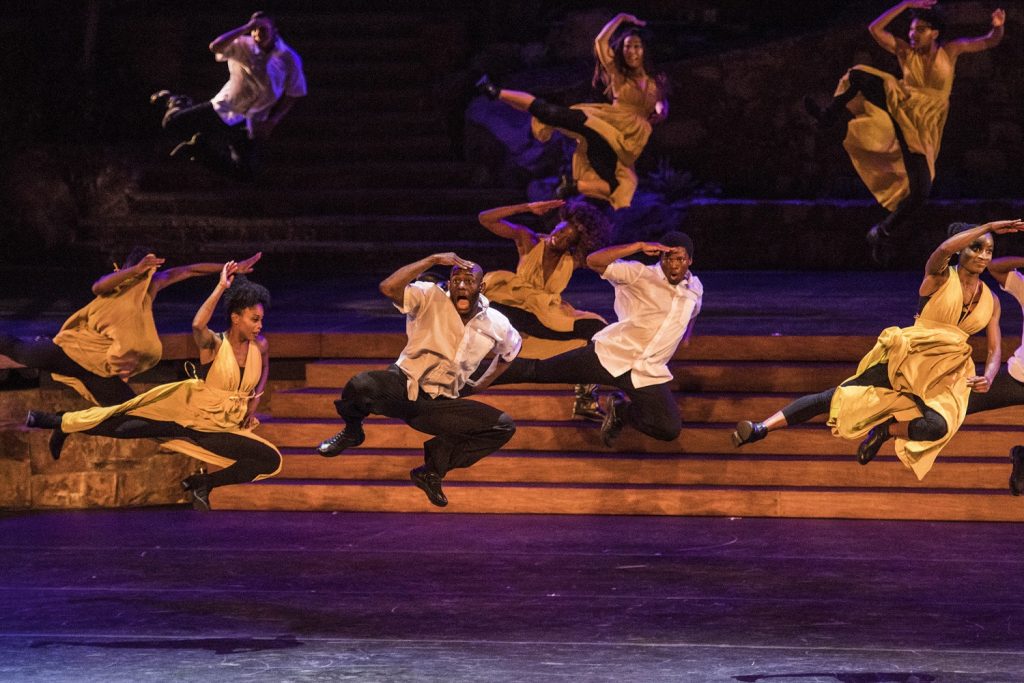
Lula Washington Dance Theatre in Rennie Harris’ REIGN. – Photo: Timothy Norris, Courtesy of Ford Theatres
One of the questions that my colleague Ann Haskins sent me was if there were any surprises for them during this project with the The Soraya and Graham Company.
“One of the surprises was how easy everyone came together. It was really a love fest with Blakely White-McGuire who Janet Eilber sent to rehearse with us,” Tamica said. “We rehearsed on our own and learned from the video as much as possible and then she came in and got deep into it with them. They all connected so well and so easily together. Blakely was wonderful. Also, Janet actually came and gave of her own time for that rehearsal. “
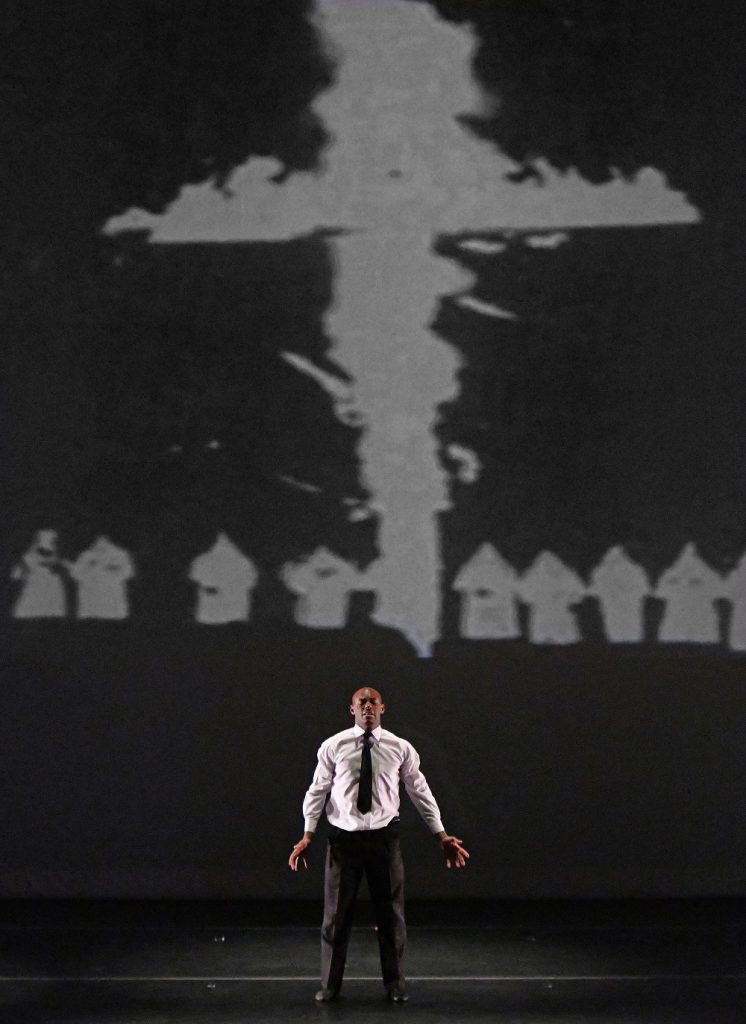
Lula Washington Dance Theatre performs “King” (excerpts from “The Movement”) by Lula Washington, featuring Michael Tomlin, III – Photo by Kevin Parry.
Joyce Herring, former principal dancer for Martha Graham who had danced with Janet in the company sat with Erwin and Tamica and gave the “the story interview of a lifetime.” “I mean, the connections that we made with each other were really, really authentic and meaningful. The energy was so right,” Tamica said. “Being in the building and understanding how such an enormous entity can go through the same kinds of challenges all of us can go through. Words from Joyce Chisale’s poem To Exist, my mom’s favorite poem, inch by inch we go, little by little we go are very affirming and relevant. We must keep doing what we’re called to do. I don’t know that it was a surprise, but I know it was very meaningful.”
“For me,” Lula said. “it’s been a total surprise in the sense that I didn’t know what to expect. If when the young lady, Blakey came, I didn’t know how she would receive us. I didn’t know what she might think about the dancers, so I purposely did not go into the rehearsals with them. I made sure that they had what they needed and that was it. So, it’s very important to me that my presence was not in the rehearsal room during that process, that she {Blakley] had the full time and space and energy with them to communicate. To get to know them as dancers and to pull out from them what she need in the work. I was very pleasantly pleased when they came out so early on the first day and she was so happy. I said, ‘How did it go’ and she said, ‘oh, it was wonderful. I’m very happy because I’m getting what I need to get from the dancers on the first go around. The dancers are capable and strong and able to do the work.’
Lula said that at first she was hesitant to join in this project because she did not want her company to be “compared” to the Martha Graham Dance Company. “We have been in such positions over our years to be compared with different companies everywhere,” she explained. “And so, that was my hesitation.” It is important to Lula that her dancers are seen in their own light.
As Tamica wrote to me, “Lula is her own person with her own artistic perspective and approach who engages with well rounded, well trained dancers. Modern/Contemporary Dance is not a monolith but so often artists are compared as if they were.”
Unrelated to this project, I asked Lula why she did not move her company to dance mecca, New York City. “For me, the reason is easy. I don’t like New York!” She explained that it was fine if they went for a week or so to do business, but that a week was long enough. “The east coast is not for me,” she said. “You need a support system to do this work. Here is where I felt very strongly that my roots were.” She was once told that she should go to New York but felt that all the support that she needed was right here in Los Angeles. I think that the majority of dancers in this town are very grateful that she made the choice to base the Lula Washington Dance Theatre and its school right here in LA.
LA Dances Graham100 will appear for one night only on April 26, 2025 at The Soraya so purchase your tickets now. You should not miss the opportunity to see this performance.
For more information and to purchase tickets, please visit The Soraya website.
For more information about the Lula Washington Dance Theatre, please visit their website.
This article was edited at 11:45 am on 4/16/25 to include additional information.
Written by Jeff Slayton for LA Dance Chronicle.
Featured image: Lula Washington Dance Theatre performs the world premiere of “To Lula with Love/Warrior” by Christopher Huggins, featuring Lula Washington (pictured) at The Wallis – Photo by Kevin Parry.

